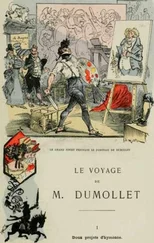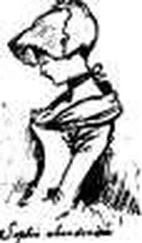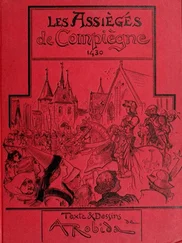Albert Robida - Yester-year; ten centuries of toilette from the French of A. Robida
Здесь есть возможность читать онлайн «Albert Robida - Yester-year; ten centuries of toilette from the French of A. Robida» весь текст электронной книги совершенно бесплатно (целиком полную версию без сокращений). В некоторых случаях можно слушать аудио, скачать через торрент в формате fb2 и присутствует краткое содержание. Жанр: Старинная литература, на английском языке. Описание произведения, (предисловие) а так же отзывы посетителей доступны на портале библиотеки ЛибКат.
- Название:Yester-year; ten centuries of toilette from the French of A. Robida
- Автор:
- Жанр:
- Год:неизвестен
- ISBN:нет данных
- Рейтинг книги:4 / 5. Голосов: 1
-
Избранное:Добавить в избранное
- Отзывы:
-
Ваша оценка:
- 80
- 1
- 2
- 3
- 4
- 5
Yester-year; ten centuries of toilette from the French of A. Robida: краткое содержание, описание и аннотация
Предлагаем к чтению аннотацию, описание, краткое содержание или предисловие (зависит от того, что написал сам автор книги «Yester-year; ten centuries of toilette from the French of A. Robida»). Если вы не нашли необходимую информацию о книге — напишите в комментариях, мы постараемся отыскать её.
Yester-year; ten centuries of toilette from the French of A. Robida — читать онлайн бесплатно полную книгу (весь текст) целиком
Ниже представлен текст книги, разбитый по страницам. Система сохранения места последней прочитанной страницы, позволяет с удобством читать онлайн бесплатно книгу «Yester-year; ten centuries of toilette from the French of A. Robida», без необходимости каждый раз заново искать на чём Вы остановились. Поставьте закладку, и сможете в любой момент перейти на страницу, на которой закончили чтение.
Интервал:
Закладка:
How superb they were, those belles of the Middle Ages, with their long clinginfy gowns, covered with regularly repeated designs of rose-form, and alternate squares of different colours, making a kind of chessboard of the whole body, or flowers and foliage in large groups, frequently woven in gold or silver. These stuffs took grand folds, and draped themselves naturally in statuesque lines; from samples
D .
YESTER-YEAR.
of them which still exist in museums, we may judge of the effect they must have produced when made up into stately trailing gowns.
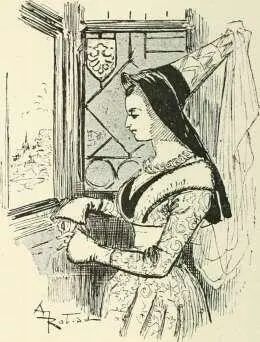
A noble Châtelaine.
Armorial bearings, which came into existence with the earliest social organizations, with the first heads of clans or warrior-chiefs, but were regulated at a later period, appeared upon the ladies' gowns, which were stamped like their husbands' shields with symmetrically arranged escutcheons.
This custom found favour, the fashion ' took,' as we should now say, and very soon heraldic designs were displayed more fully upon the gowns called ' cottes historiées.'
Let us summon up a vision of these noble dames at Court, or on festive occasions in their castles, in those vast halls now open to all tlie winds that blow, and inhabited only by crows, —always the last dwellers amid feudal ruins— let us fancy them seated at the tables of state, between the lofty fire-places and the musicians' gallery, or else on the platforms or ' eschaffaux ' alongside of the lists stricken for the famous tournaments. There they are, arrayed in robes emblazoned through all their length with the arms of their husbands or their families, displaying, like living standards, every invention of the heraldic art, portraying all the beasts of its menagerie, lions and leopai'ds.
wyvems and griffins, wolves and stags, swans and crows, sirens and dragons, fishes and unicorns, all of them of fantastic aspect, all winged, nailed, clawed, horned, and toothed, issuant, passant, and rampant on glittering fields, gules, vert, and azure.
And the non-heraldic robes, strewn with great curving flowers, or highly-decorative designs, are not less rich or less brilliant.
The shapes of the period, although they seem to be very various, are all on the same principle. The surcoat has no sleeves, it is opened more or less widely at the side from the shoulder to the hip, in order to show the under-dress which is of another colour, but harmonizes with the upper, and is either more or less covered with designs than the surcoat, so that there should not be equality in this ornamentation.
A 'garde-corps' or bodice-front of ermine adorns the upper part of the surcoat ; the fur is cut low on the shoulder to exhibit the bosom, which was very liberally uncovered, especially in full dress. A band of ermine bordered the cut-out portion of the surcoat on the shoulders and hijis.
There was great variety in the shapes of the bodices, both of surcoats and cottas, in shoulder ornaments, and in the methods of baring the neck. Certain modes were immodest ; preachers denounced against the immorality of fashion from the pulpit, and the reciters of the old ' fabliaux,' who are not prudish, made fun of them.
Upon the invention of linen cloth, women were not satisfied with baring their necks in order to show their linen gorgets, or the tops of their chemises, they devised the plan of cutting their gowns open at the side, leaving long apertures from the shoulder to the hip, laced across and exhibiting the linen underneath.
At that time, as at every other, certain fine ladies persisted in exaggerating the vagaries of fashion. Some of these fair dames wore gowns so narrow and so clinging that they seemed to be sewn up in them, or else the surcoats were so much too long that the superfluous material had to be tucked into front pockets in which the hands also were placed, otherwise the skirt was gathered up and
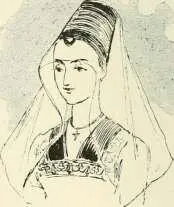
The little Henuiu.
fastened to the girdle. The latter alternative was a very pretty fashion, and formed those delightful broken folds which we see in the drapery of statues.
The sleeves of these long surcoats, with the ' serpent-tail ' train, which great ladies were allowed to have carried by a page, became elongated also. The sleeves of the under-dress came down to the wrist with an outward slope which covered a portion of the hand. The wider sleeves of the surcoat were either open from the shoulder, and hung down almost to the ground, or slit from the elbow to the wrist, or made with only an aperture through which the fore-arm passed.
There were several varieties in sleeves, long, wide, or tight ; sleeves cut and buttoned underneath from shoulder to wrist, sleeves cut out, or puffed at the elbow, even the sleeves called ' à mitons ' were worn, the end forming close mittens, and ' pocket-sleeves ' closed at the ends ; these were pretty and convenient inventions after all.
Lastly, there were vast sleeves like wings, with edges cut like the teeth of a saw, or like oak leaves, or bordered with a thin line of fur.
Jewellery assumed great importance. All women, whether great ladies or bourgeoises, adorned their costumes with jewels of greater or less price ; necklaces, head-circlets ornamented with precious stones placed upon the head-piece, jewelled buckles, and girdles of wrought braid and gold work.
The ' aumônière ' or ' escarcelle ' (literally, alms-bag) attached to the girdle was made of rich stutf bordered with gold, with a gilded clasp and ornaments. The great ladies were dazzling, they literally shone. The sumptuary laws were quite ineffective. In vain did Philip the Fair enact and ordain, forbid ermine and miniver to the bourgeoises, and debar them from golden girdles set with pearls and precious stones, in vain did he decree that :—
"No damoiselle, if she be not châtelaine or dame owning 2,000 livres yearly shall have more than one pair of gowns per year, and if she be, she shall have two pairs and no more.
" In like manner also the dukes, counts, and barons owning 6,000 livres yearly shall be
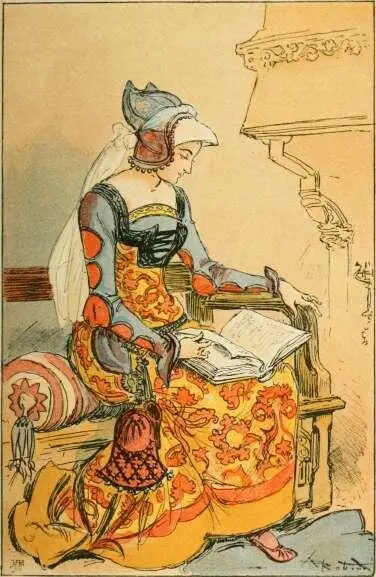
CHATI-:[.AI\H, MIf.ll-;U DU XV^ SIHCl.E.
allowed to have made for them four pairs of gowns per year, and not more, and for their wives as many ..."
In vain did Philip the Fair fix a maximum price per ell on stuff for outer garments on a descending scale for all sorts and conditions of people, from twenty-five sols the ell for barons and their wives, down to seven sols for their squires, and—a remarkable testimony to the wealth of the townspeople and shopkeepers of the great cities even in that bygone time— permit the wives of the bourgeois to go so far as sixteen sols the ell ; in vain did he provide against everything, and make stringent rules ; nothing availed, not even the threat of fines. Great ladies and wealthy city dames alike defied the commands of the king, the remonstrances of their husbands, and the admonitions lavished upon them from innumerable pulpits.
In vain did the preachers attack every part of the costumes in vogue, denouncing the occasionally indecorous slits in the surcoat as ' doors of hell,' the shoes ' à la poulaiue ' (so-called after the spur of a ship) as ' An outrage on the Creator,' and waging a bitter war against the head-dresses, whether ' cornettes,' * hennins,' or the high head-tires called ' escoffions ' ; the
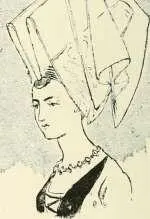
Интервал:
Закладка:
Похожие книги на «Yester-year; ten centuries of toilette from the French of A. Robida»
Представляем Вашему вниманию похожие книги на «Yester-year; ten centuries of toilette from the French of A. Robida» списком для выбора. Мы отобрали схожую по названию и смыслу литературу в надежде предоставить читателям больше вариантов отыскать новые, интересные, ещё непрочитанные произведения.
Обсуждение, отзывы о книге «Yester-year; ten centuries of toilette from the French of A. Robida» и просто собственные мнения читателей. Оставьте ваши комментарии, напишите, что Вы думаете о произведении, его смысле или главных героях. Укажите что конкретно понравилось, а что нет, и почему Вы так считаете.

